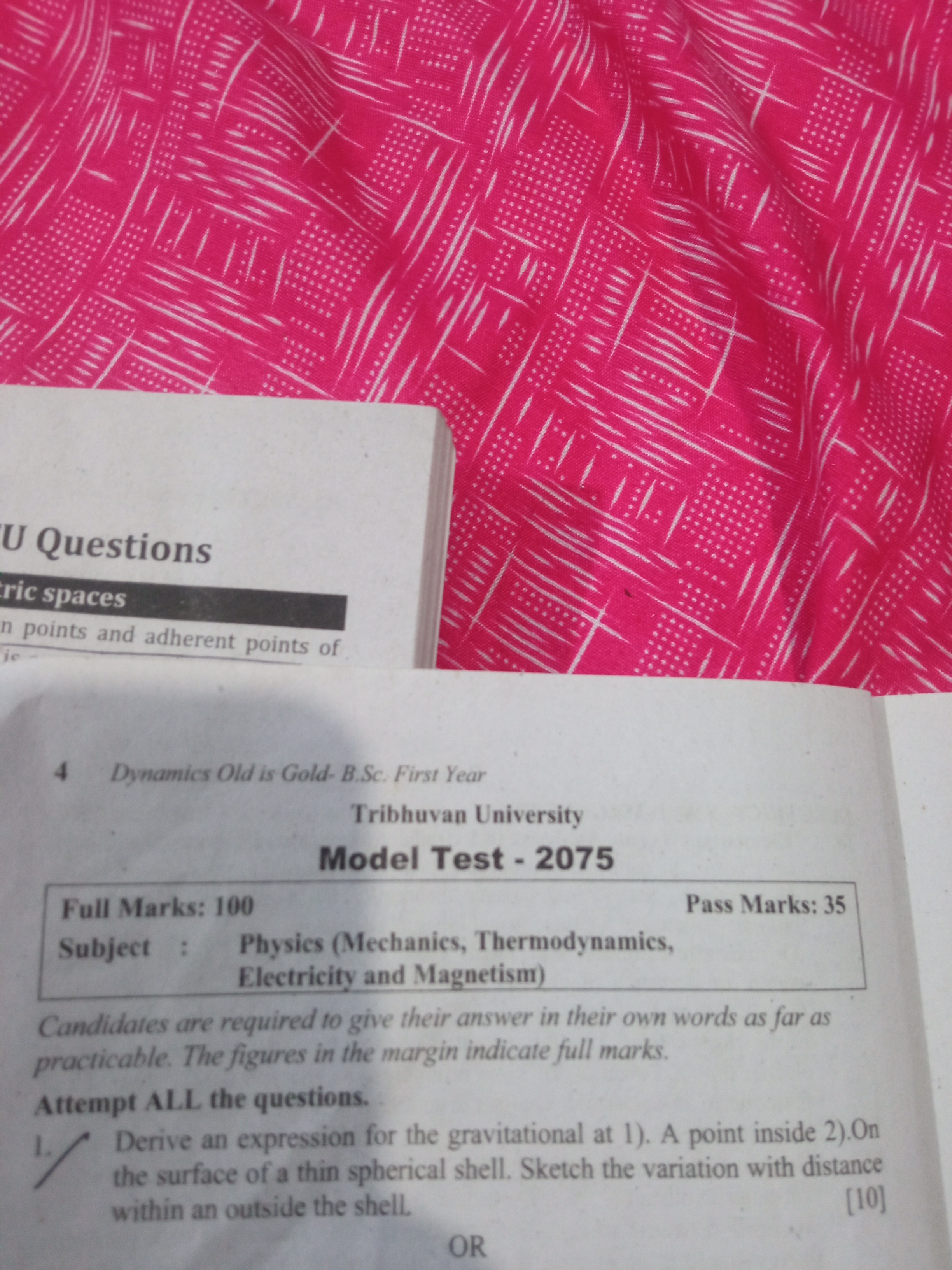Derive an expression for the gravitational field at a point inside and on the surface of a thin spherical shell. Sketch the variation of the gravitational field with distance withi... Derive an expression for the gravitational field at a point inside and on the surface of a thin spherical shell. Sketch the variation of the gravitational field with distance within and outside the shell.

Understand the Problem
The question is asking to derive an expression for the gravitational field at a point inside and on the surface of a thin spherical shell, and to sketch the variation of the gravitational field with distance within and outside the shell.
Answer
- Inside ($r < R$): $g = 0$ - On the surface of the shell ($r = R$) $g = \frac{GM}{R^2}$ - Outside ($r > R$): $g = \frac{GM}{r^2}$
Answer for screen readers
The gravitational field $g$ is given by:
- Inside the shell ($r < R$): $g = 0$
- On the surface of the shell ($r = R$) $g = \frac{GM}{R^2}$
- Outside the shell ($r > R$): $g = \frac{GM}{r^2}$
Steps to Solve
-
Define the Gravitational Field The gravitational field $g$ at a point is defined as the gravitational force $F$ experienced by a test mass $m$ at that point, divided by the mass $m$. Mathematically, this is $g = F/m$.
-
Gravitational Field Inside the Shell Consider a point $P$ inside the spherical shell at a distance $r$ from the center. We integrate the contributions to the gravitational field from all parts of the shell. Due to the symmetry, for every small mass element on one side of $P$, there's another mass element on the opposite side such that their gravitational field components cancel out. More formally, according to Newton's law of gravitation, the forces due to different elements of the shell cancel each other perfectly inside the shell. Therefore, the net gravitational field inside the shell is zero:
$$g = 0$$
- Gravitational Field on the surface of the Shell When the point is on the surface of the sphere, the gravitational field is the same as if all the mass were concentrated at the center of the sphere, $R$.
$$ g = \frac{GM}{R^2}$$
Where: $G$ is the gravitational constant $M$ is the total mass of the shell $R$ is the radius of the shell
- Gravitational Field Outside the Shell For a point outside the shell at a distance $r$ from the center, the entire mass $M$ of the shell can be considered as if it were concentrated at the center. The gravitational field $g$ at that point is given by:
$$g = \frac{GM}{r^2}$$
Where: $G$ is the gravitational constant $M$ is the total mass of the shell $r$ is the distance from the center of the shell to the point outside
- Sketching the Variation of Gravitational Field
- Inside the shell (r < R), g = 0.
- On the surface of the shell (r = R), $g = \frac{GM}{R^2}$. This is the maximum value.
- Outside the shell (r > R), $g = \frac{GM}{r^2}$. The gravitational field decreases as the inverse square of the distance.
The gravitational field $g$ is given by:
- Inside the shell ($r < R$): $g = 0$
- On the surface of the shell ($r = R$) $g = \frac{GM}{R^2}$
- Outside the shell ($r > R$): $g = \frac{GM}{r^2}$
More Information
The result that the gravitational field inside a spherical shell is zero is a consequence of the inverse-square law of gravity. This is analogous to the electrical field inside a hollow charged sphere. The field on the surface is what you might expect, as it reduces to the formula for gravity from a point mass, and the same happens outside the shell.
Tips
A common mistake is to assume that the gravitational field inside a hollow sphere is the same as the gravitational field at the center of the sphere if all the mass were concentrated there. The gravitational field is actually zero inside the sphere.
AI-generated content may contain errors. Please verify critical information